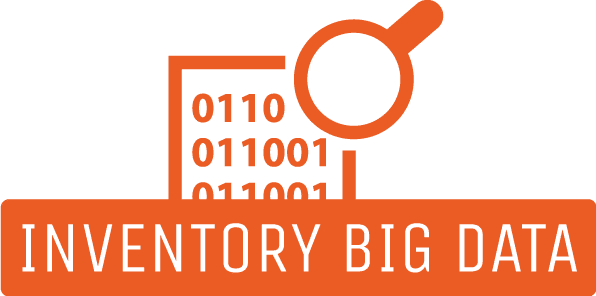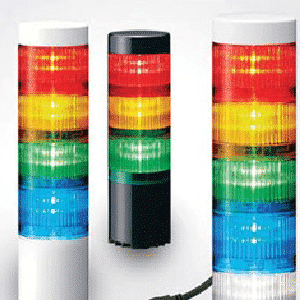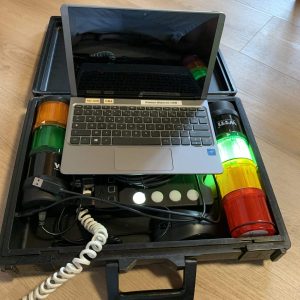Eliott – Maintenance operator
Eliott, maintenance operator, excels in the maintenance and troubleshooting of various industrial equipment. With advanced training in mechanics, electricity and automation, he ensures predictive maintenance and continuously improves processes.
Description
Eliott is a maintenance operator. In industry, he is one of the most versatile players. He has to adapt to all techniques in order tomaintain and troubleshoot equipment and machines.
Who is Eliott?
Eliott began his career working for a small local industrial equipment maintenance company after graduating from high school. Working on a variety of projects and learning new systems, Eliott developed a passion for industrial equipment maintenance and repair. He decided to continue his studies by taking a vocational training course in industrial maintenance, where he acquired advanced technical skills in the fields of mechanics, electricity and automation.
With over 10 years’ experience in industrial maintenance, Eliott has become an expert in his field. He has worked in a variety of industrial environments, including automotive parts manufacturing, the chemical industry and the food industry. He has also worked with a variety of equipment, from machine tools to industrial robots and process control systems.
Eliott is known for his calm and decisive nature. He takes the time to analyze each situation before making a decision, and has a great ability to work under pressure. He is also highly organized and attentive to detail, enabling him to diagnose problems quickly and accurately in the equipment he services. Eliott is also appreciated for his ability to work as part of a team and his willingness to share his knowledge with colleagues.
Meeting routines
Improving Predictive Maintenance with Production Andon Lights.
Eliott: Hi Oliver, I’m Eliott, the maintenance operator here at the facility. I’ve been hearing a lot about using data analysis to optimize production on the shop floor, and I was wondering if you could tell me more about it.
Oliver (Data Scientist): Hi Eliott, sure. Data analysis can be a very powerful tool for optimizing production on the shop floor. For example, we can use data analysis to identify bottlenecks or inefficiencies in the production process, and then find ways to address them. One specific area where data analysis could be useful is with the andon lights that we use to indicate when there is a problem on the shop floor.
Eliott: That sounds really interesting. How would we go about implementing data analysis for the andon lights?
Oliver: There are a few different steps we would need to take in order to implement data analysis for the andon lights. First, we would need to collect data on the andon lights, including information on when they are activated, how long they are active for, and what types of issues they are indicating. This data could be collected manually or through automated data collection methods.
Next, we would need to analyze the data to identify patterns or trends. For example, we might look for patterns in the types of issues that are causing the andon lights to be activated, or we might look for trends in the duration of the andon light activations.
Finally, we would need to use the insights we gain from the data analysis to implement changes or improvements to the production process. This might involve adjusting the way certain tasks are performed, reorganizing the layout of the shop floor, or implementing new equipment or procedures.
Eliott: Okay, that makes sense. Thanks for explaining it to me. I’m really excited to see what kind of improvements we can make with data analysis.
Oliver: I’m glad to help. I’m confident that we can use data analysis to make significant improvements to the production process on the shop floor. Let’s work together to make it happen
Using Andon lights for Predictive and Performance-based Maintenance.
Supervisor: Good morning Eliott, I noticed that the signal light for machine X has turned yellow. Can you go take a look and see what’s going on?
Eliott: Good morning, yes of course. I’ll go there immediately.
(A few minutes later)
Eliott: I found the source of the problem. It’s a minor defect in the drive belt. I took corrective measures to fix it.
Supervisor: Great, thank you Eliott. And did you think about collecting data from this breakdown for predictive maintenance?
Eliott: Yes, I used our maintenance tracking system to record the details of the breakdown. We can use this data to anticipate potential breakdowns and perform repairs before they occur.
Supervisor: Perfect, that’s exactly what we need to do. And speaking of maintenance, have you started using performance data for performance-based maintenance?
Eliott: Yes, we’ve started collecting data on the performance of our machines and we’re using it to determine necessary maintenance based on their actual usage. This allows us to better allocate our maintenance resources and improve the availability of our production machines.
Supervisor: Very good, keep it up Eliott. You’re doing an excellent job in ensuring the proper functioning of our machines and optimizing our company’s production.
Additional information
| Human Ressource | |
|---|---|
| Level | Technician |
| Department | Manufacturing |






